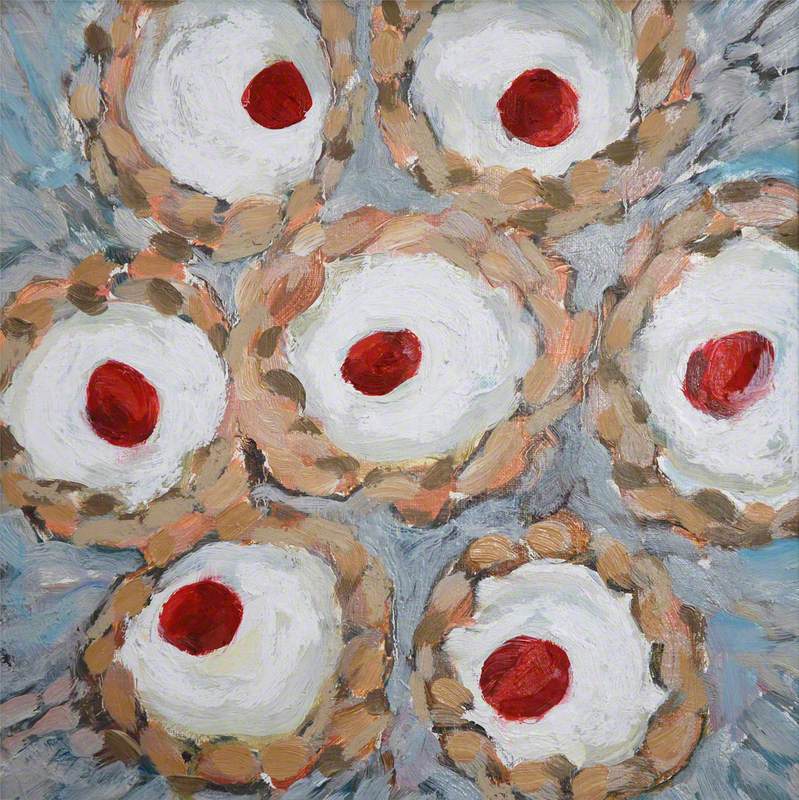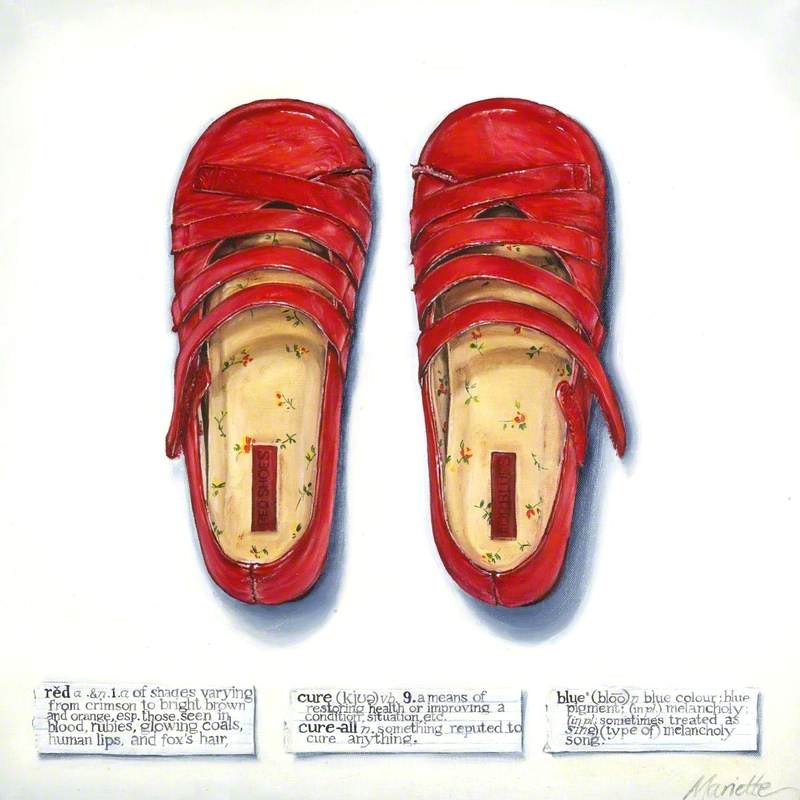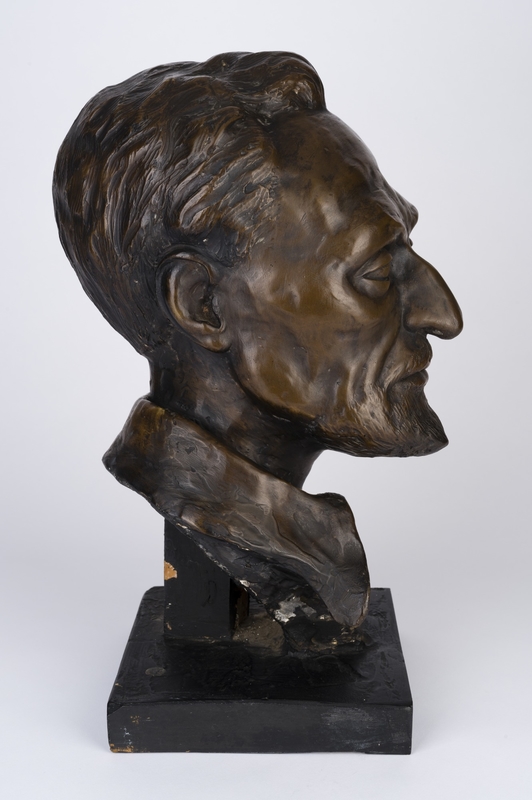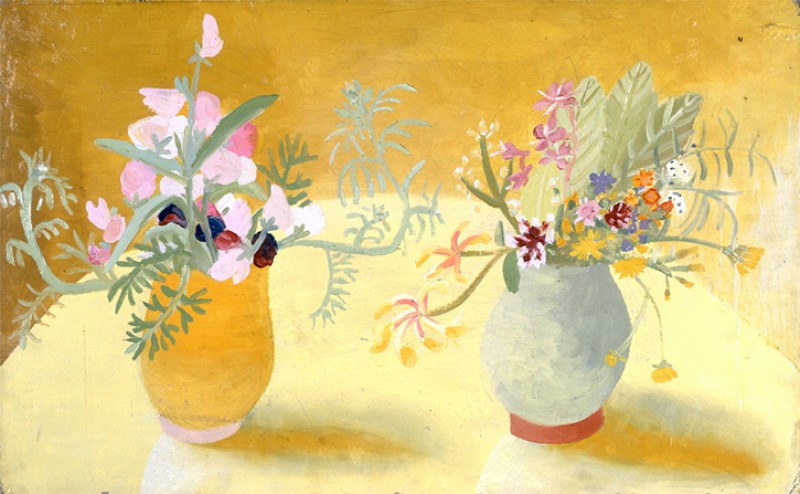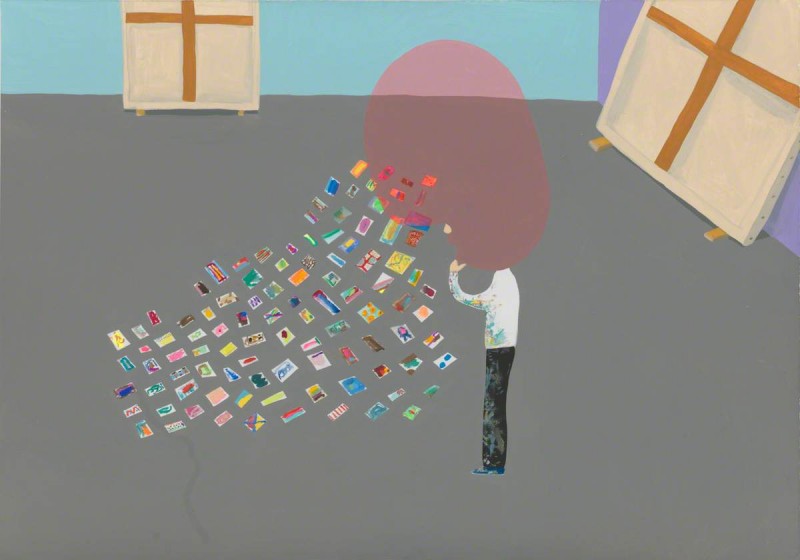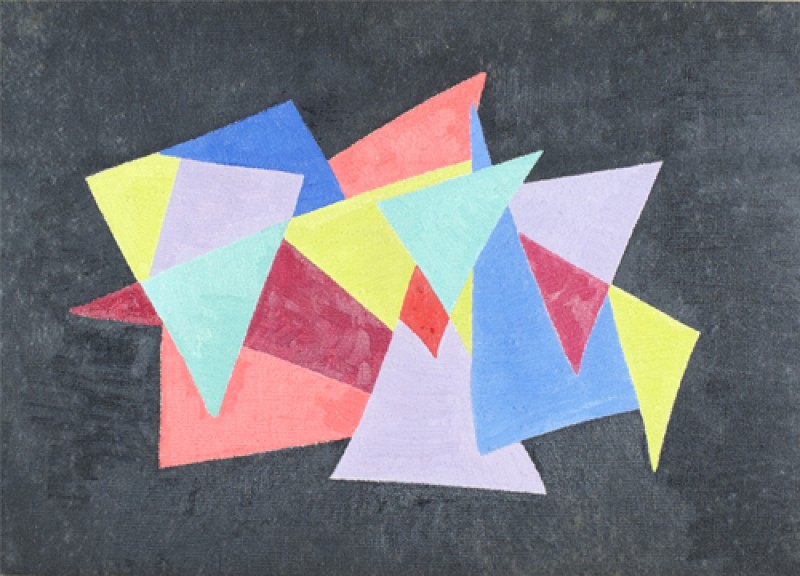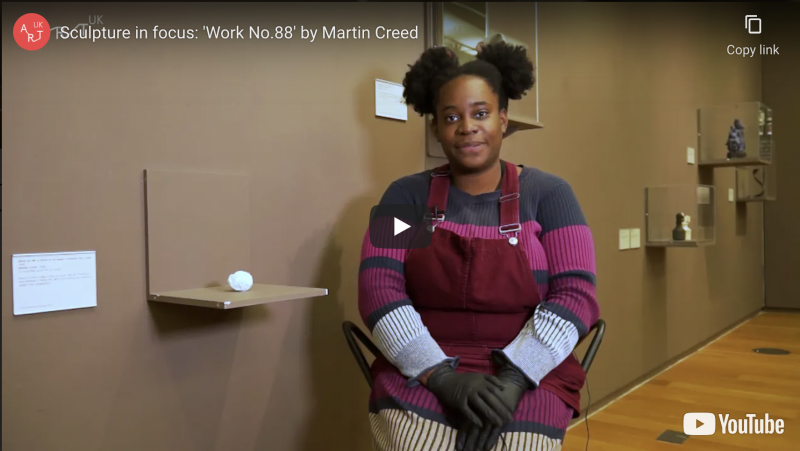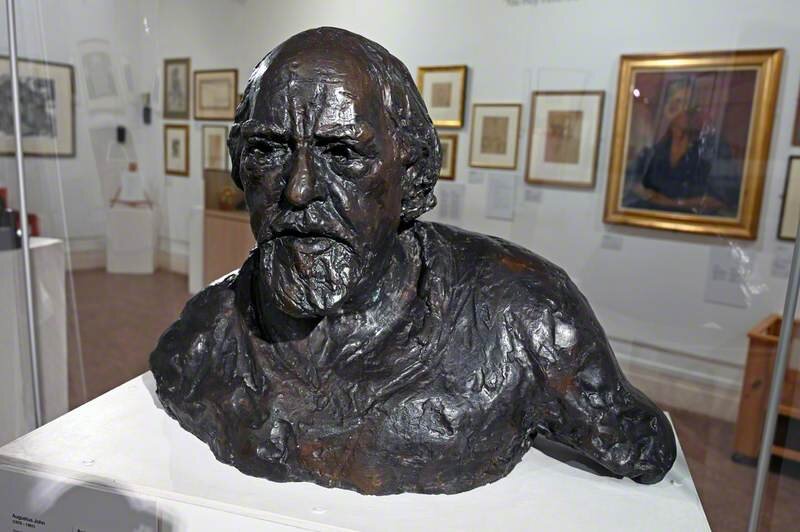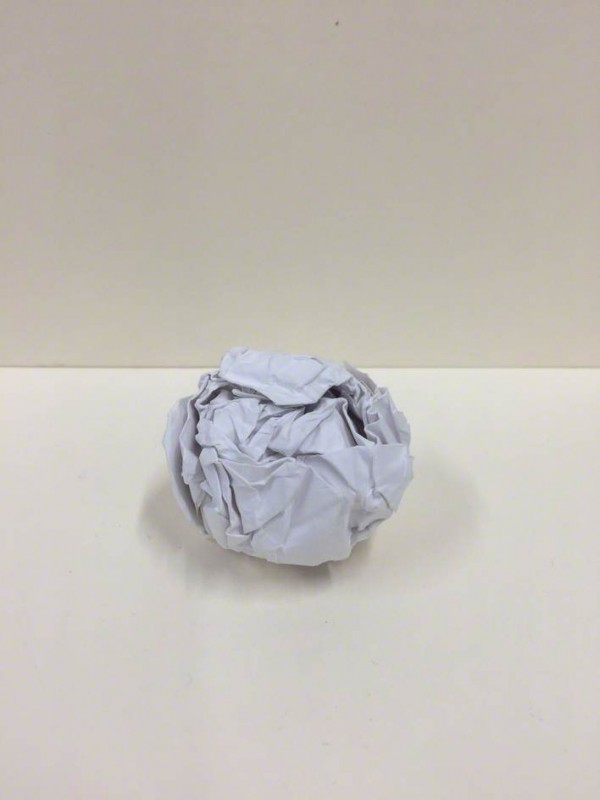What inspires you?
What objects inspire you? They don't have to be great works of art or famous landmarks, they could be as simple as a book you are reading, your new shoes or your favourite cake!
About this activity
This simple activity is inspired by artist Bob and Robert Smith's book You Are An Artist and adapted from an Art UK Homeschool story about the book and its message. Bob and Roberts Smith, a.k.a. Patrick Brill, is a British contemporary artist, activist, writer, broadcaster, musician and art education advocate.
You Are An Artist
front cover of book by Bob and Roberta Smith, published by Thames & Hudson 
Drawing on Smiths's experience as an art teacher, it playfully adapts methods of art education, mixing these with a sideways approach to creativity popularised by the author's activist campaigns.
In the spirit of You Are An Artist, this activity is designed for anyone who has ever considered making art, but may not have yet been quite brave enough to take the plunge. It is suitable for all ages, for families at home or students in the classroom.
The activity is based on one of Bob and Roberta Smith's favourite activities from his book.
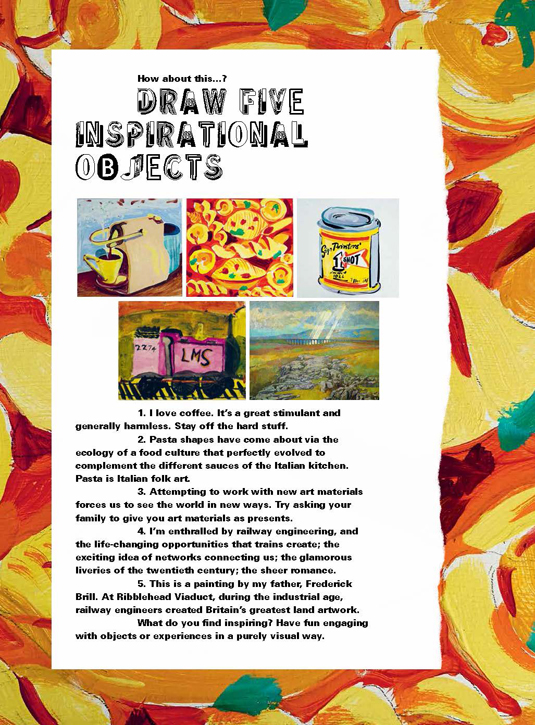
Bob and Roberta drew five objects that meant something to him and explained why he found them inspiring. Start by looking at the drawings and discover why the objects are inspiring to him.
Teachers' note
Use this activity in the classroom with young students or students who may lack confidence in drawing.
It is an opportunity to explore and experiment with drawing materials, the marks they make and how materials can be used to put across different feelings and emotions – as well as capture what the world around us looks like.
Notes are included in the resource to support you in using this resource in the classroom.
Bob & Roberta Smith's five inspiration objects
1. I love coffee. It's a great stimulant and generally harmless. Stay off the hard stuff.
artwork by Bob and Roberta Smith (b.1963) 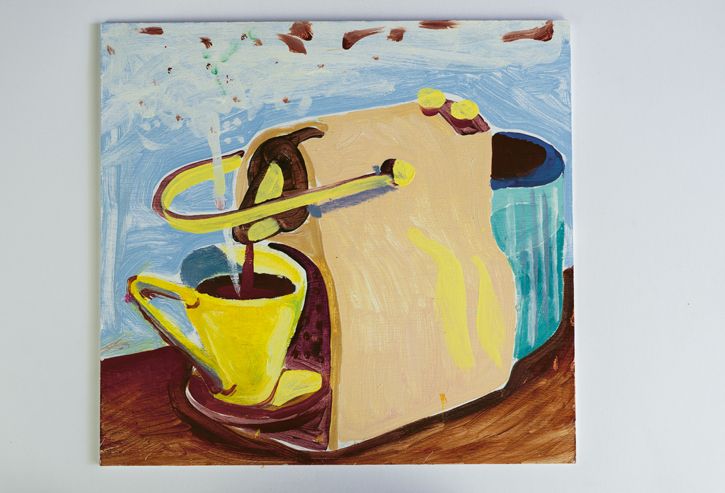
2. Pasta shapes have come about via the ecology of a food culture that perfectly evolved to complement the different sources of the Italian kitchen. Pasta is Italian folk art.
artwork by Bob and Roberta Smith (b.1963) 
3. Attempting to work with new art materials forces us to see the world in new ways. Try asking your family to give you art materials as presents.
artwork by Bob and Roberta Smith (b.1963) 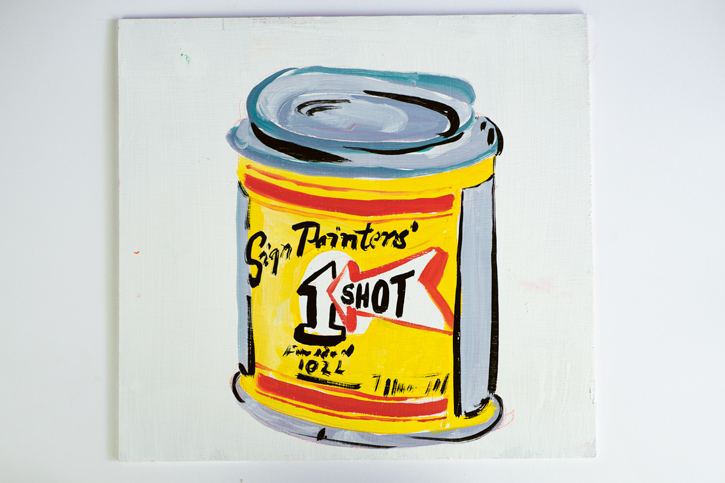
4. I'm enthralled by railway engineering and the life-changing opportunities that trains create – the exciting idea of networks connecting us – the glamorous liveries of the twentieth century, and the sheer romance.
artwork by Bob and Roberta Smith (b.1963) 
5. This is a painting by my father, Frederick Brill. At Ribblehead Viaduct, during the industrial age, railway engineers created Britain's greatest land artwork.
Ribblehead Viaduct with Fingers of God
1976, oil on canvas by Frederick Brill (1920–1984) 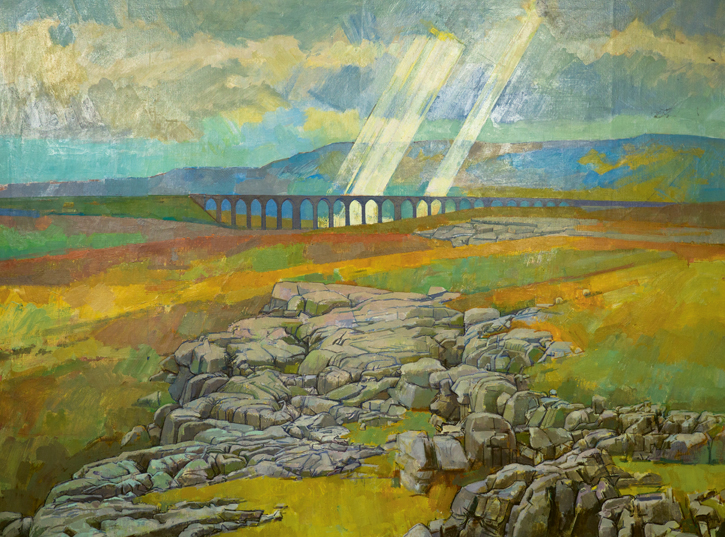
Teachers' note
You could show each of Rob and Roberta Smith's drawings to your students.
Ask them what the drawings show and encourage them to discuss why they think the objects might be inspiring.
You could also ask students to talk about how Smith has used colours, mark-making and composition in the drawings. (Do the objects fill the picture or is there lots of space around them?)
Now it's your turn!
What do you find exciting or inspiring?
Think about the things that inspire you. They might inspire you visually – because of their shape and colour. Or they might mean something to you – such as a photograph of a holiday or someone you love.
Memorial Painting
(right wing of diptych)
1997–1998
Andrew Tift (b.1968)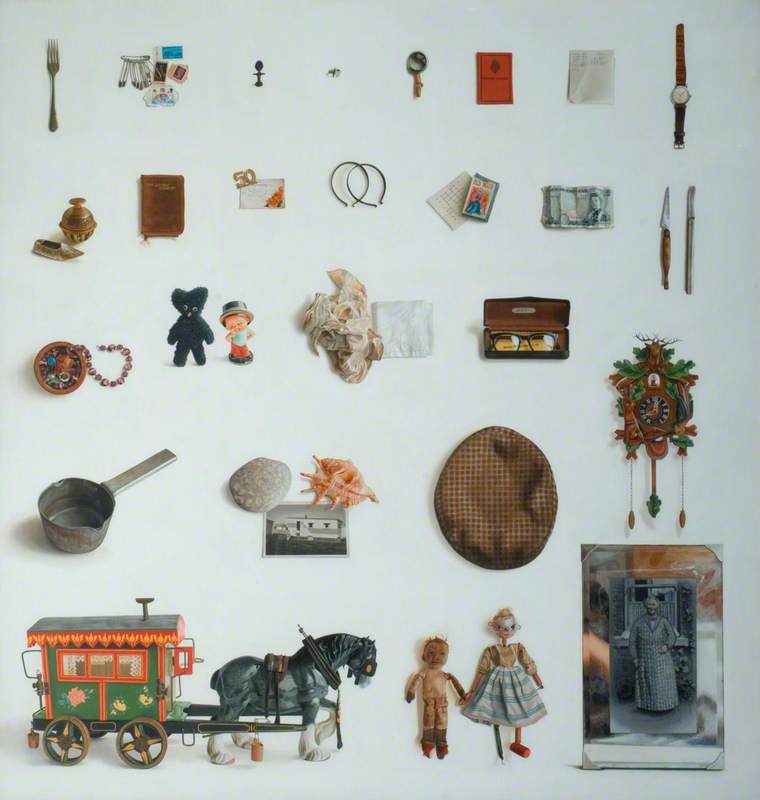
For example, my five inspirational objects might be:
- A book of stories that I currently just can't put down!
- A painting of a lady with a small dog that my grandparents gave to me. Who was this mysterious lady?
- A photo of my young son on my office pinboard. I wonder what great things he will go on to do in his life.
- My new pink hob kettle I use for making weekend tea.
- My comfy bed, as rest energises and inspires me – I often have ideas when falling asleep. It's just a shame I don't always remember them when I wake up.
Teachers' note
Ask students to think about objects that inspire them.
They could bring an object from home into the classroom or, a photograph of the object. Ask them to describe what it is about the object that they find inspiring or exciting.
You could also set this task as a homework project. Task students with choosing an object, making a sketch of it and writing a short text about why it inspires them.
Look at your five objects
- Look at their shape and colour.
- Think about what it is you like about them
- How do they make you feel? (It might help to write down words that describe what the objects make you think and feel.)
Now have a go at drawing the objects
Make a line drawing. Look carefully at the object and let your hand follow its shape on the paper. Don't worry if your drawing isn't accurate, this activity is about inspiration and seeing what happens!
Now use crayons, felt pens (or paint) to make a colourful drawing of your object.
- What shapes and patterns can you see?
- How can you use colours, lines and marks to put across what the object means to you?
- Your drawing could be an abstract drawing celebrating the object and how it makes you feel!
Mix up your approach to drawing your five objects – some could be representational – showing what an object looks like.
Others could be abstract – capturing how an object makes you feel.
Teachers' note
Explain to students that art doesn't have to show what something looks like – it can also express feelings and ideas.
Provide a range of drawing materials (pencils, crayons, charcoal, brushes and ink) and encourage students to experiment with what the materials can do – and the marks they can make.
- Encourage them to think about what a soft, gentle mark suggests and what a strong scribbly line suggests.
- How can they use mark-making to help put across the essence of their objects and how and why they are inspired by them?
Use these Art UK resources to find drawing advice and tips:
